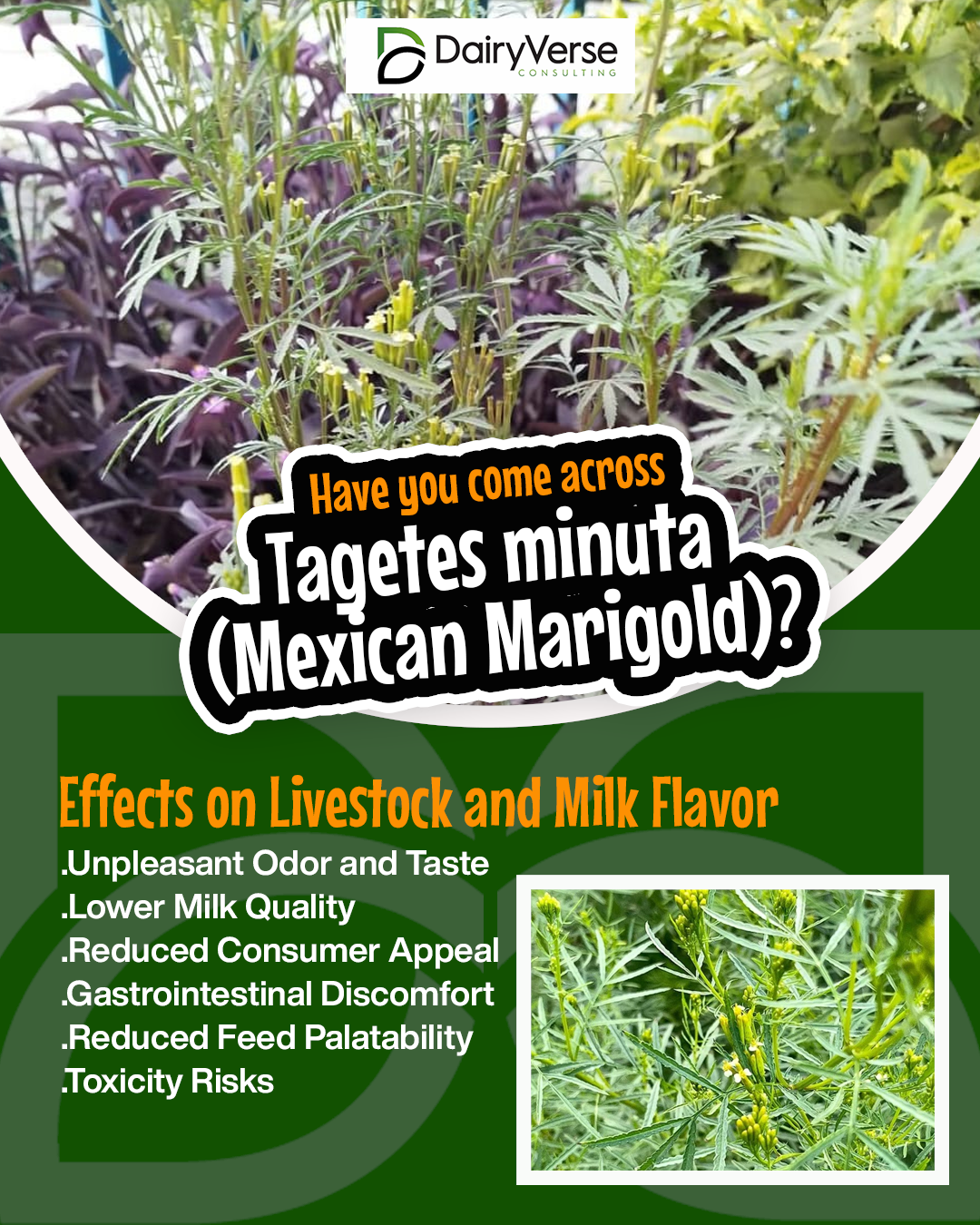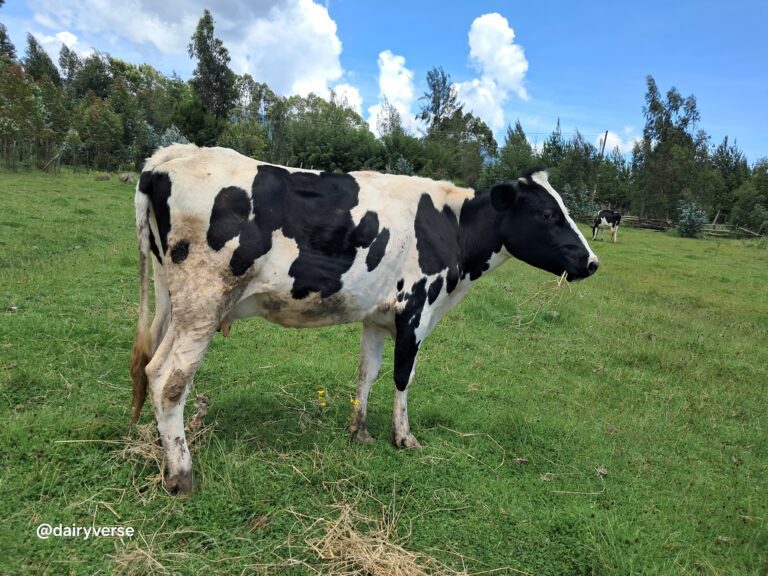How Tagetes minuta Affects Milk Flavor
Introduction
Tagetes minuta, commonly known as Mexican Marigold or Stinking Roger, is a fast-growing herbaceous plant that belongs to the Asteraceae family. While it is valued for its medicinal and insect-repelling properties, it is often considered a problematic weed in livestock farming. The plant is notorious for tainting milk when accidentally included in cattle feed, causing undesirable flavors that can affect dairy quality.
Identifying Tagetes minuta
Tagetes minuta is characterized by its:
- Strong, pungent smell
- Finely divided, feathery leaves
- Small yellow or orange flowers
- Erect, bushy growth, often reaching 1 to 2 meters in height
It thrives in disturbed soils, roadsides, pastures, and cultivated lands, often growing alongside napier grass and other livestock fodder crops.
How Tagetes minuta Affects Milk Flavor
When cows consume Tagetes minuta, the compounds present in the plant are metabolized and transferred into the milk. The primary effects include:
- Unpleasant Odor and Taste: The milk develops a strong, bitter, and sometimes medicinal flavor, making it unpalatable for consumers.
- Lower Milk Quality: Farmers may struggle to sell tainted milk, leading to financial losses.
- Reduced Consumer Appeal: Dairy processors may reject milk contaminated with off-flavors, impacting the entire supply chain.
Compounds Responsible for Tainting
Tagetes minuta contains volatile organic compounds, including:
- Thiophenes: Responsible for the strong smell and bitter taste.
- Terpenoids: These compounds contribute to the plant’s insecticidal properties but also affect the flavor profile of milk.
- Essential Oils: While beneficial in traditional medicine, these oils can cause off-flavors when consumed by dairy animals.
Other Negative Effects on Livestock
Aside from tainting milk, Tagetes minuta can have additional effects on livestock:
- Gastrointestinal Discomfort: Ingesting large amounts may lead to bloating or digestive issues.
- Reduced Feed Palatability: Livestock often avoid eating fodder contaminated with this plant due to its strong odor.
- Toxicity Risks: While not highly toxic, excessive consumption may cause mild poisoning symptoms in sensitive animals.
Other Livestock Feeds That Affect Milk and Egg Flavor
Several other feed materials can influence the taste and quality of milk and eggs, including:
- Onion and Garlic: Cause a strong, pungent odor in dairy and eggs.
- Brassicas (Cabbage, Kale, Mustard Greens): May lead to a sulfuric taste in milk.
- Certain Weeds (Ragwort, Bitterweed, Wild Garlic): Introduce bitterness or medicinal flavors.
- Lucerne/Alfalfa (Excessive Amounts): Can sometimes result in grassy-tasting milk.
- Fish Meal (In Poultry Feeds): Often leads to a fishy taste in eggs.
Prevention and Control
To minimize the risk of Tagetes minuta contamination in milk production:
- Manual Removal: Regularly weed pastures and fodder crops to prevent accidental ingestion.
- Proper Fodder Harvesting: Carefully inspect and clean harvested napier grass and other forages.
- Pasture Management: Maintain well-managed grazing areas with high-quality forage to reduce the chance of livestock consuming undesirable plants.
- Alternative Feeds: Supplement diets with high-quality commercial feeds to reduce reliance on wild vegetation.
Conclusion
Tagetes minuta may have medicinal benefits, but its impact on livestock farming—particularly in tainting milk—makes it a concern for dairy farmers. By identifying, controlling, and eliminating this plant from fodder sources, farmers can maintain the quality and marketability of their dairy products while ensuring the well-being of their livestock. Proper pasture management and vigilant feed selection remain key to preventing milk contamination and maintaining high agricultural standards.







